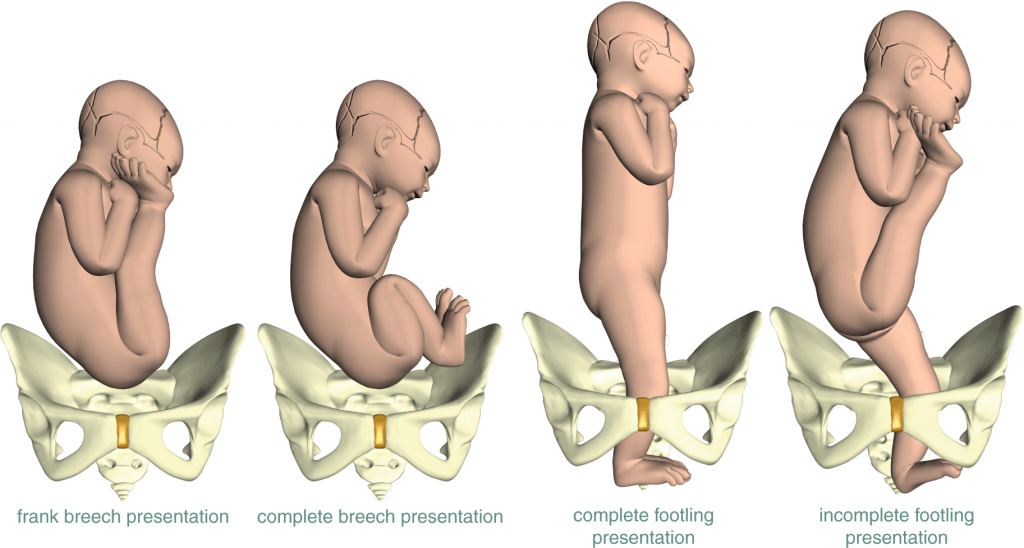
Fetal Position
During pregnancy, the child can change its position more than once, like a little gymnast, therefore, there are different fetal positions in pregnancy.
However, when the pregnancy gets to the 32nd or 36th week, the child takes the correct position (head down) and stays like that until birth.
The baby will be born head first from this position. All children take this position, except for 3-5%, which turns their buttocks to the way out. This position is called the breech presentation.
What is Breech Presentation in Pregnancy?
A breech presentation is the longitudinal lie of the fetus with the buttock, or legs down into the cervix while the head is up (the baby is taking the sitting position).
The breech presentation is one of the common positions of most babies in the second and the third trimesters, before the 33rd week.
A breech presentation is normal until the due date is very near and the baby is not turning his head down.
Note that breech babies are not linked to gender, whether male or female or fate in life.
Types of Breech Presentation
There are different types of breech presentations in pregnancy. Some experts believe there are 3 types of breech position: Complete breech, incomplete breech, and frank breech presentation.
Other experts believe there are 4 types of breech presentation: Complete, incomplete, frank, and footing breech position.
Complete: The baby’s buttock is down into the birth canal and comes first during birth while the knees are bent.
Incomplete: In this situation, only one knee is bent while the feet and buttock are down near the cervix.
Frank: It is when the legs are folded against the head while the buttock is down near the birth canal. The most common type of breech presentation is the Frank position.
Footling: This is when the baby’s leg(s) is pointing down to the cervix before the buttock. This occurs not until the due date and is common in premature babies.
Causes of Breech Presentation
Like I’ve said earlier, fetal movement is normal during pregnancy and your baby can move in a different direction until the last few weeks he’s ready to come out that the head is dropped down to the birth canal.
However, either before the 32nd week of pregnancy or when your pregnancy is at the 36th week or 40th week, there are no defined causes of breech presentation.
Having said this, the following conditions are the most common causes of breech presentation.
- Placenta previa
- Multiple pregnancies
- Aneuploidies
- Oligohydramnios
- Premature baby
- Uterine leiomyoma
- History of breech delivery
- History of Cesarean section
- Multiple gestations
- Fetal hydrocephalus
- Short umbilical cord
- Gestational diabetes
- A low or high volume of amniotic fluid
- Congenital, and Mullerian anomalies
Signs and Symptoms of Breech Presentation
Once your pregnancy is at the 32nd week or more, and your baby is still in the breech presentation, there’s a need for concern.
However, there are some signs and symptoms to watch before you go for your last ultrasound check.
- If you’re having a breech baby, you may feel more kicks at your lower belly and pain in your diaphragm.
- Subcostal tenderness
- Ballottable head in the fundal area
- A very loud fetal heartbeat that’s more than the umbilicus
- Softer irregular mass in the pelvis
These are some of the signs and symptoms of breech presentation in pregnancies.







